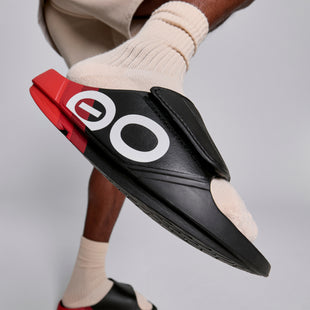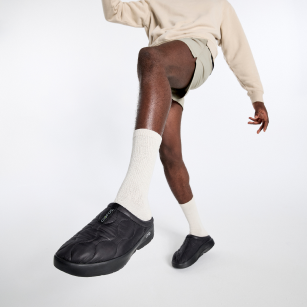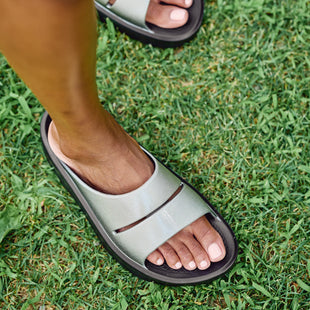J.D.'s story will leave yOO inspired to chase those childhood dreams.
Falling in love with the game
Growing up in South Florida, J.D. Martinez fell in love with the game of baseball as much for its history and legacy as he did for the play. Early in his life, he fell under the mentorship of Paul Casanova, a former big leaguer who played along some of the greats, like Hank Aaron. J.D. would frequent the batting cage he had on his property in Miami Gardens – in the middle of nowhere. But what really stood out to J.D. wasn’t the cage, it was the photos of all the great Cuban baseball players “from way back”. J.D. would go there both before and after school – staying late, sometimes up until 10 pm. It wasn’t just the hitting that held his attention though, it was the stories. That’s what made J.D. fall in love with the game – the stories. He wanted to be able to tell stories like that one day.

J.D. always wanted it – so much so that he’d eat, sleep, breathe it. It became the start of a work ethic that would build throughout his career and can still be seen in him today. He put baseball on a pedestal, but at that young age, he wasn’t sure that making it all the way to the big leagues was possible; not for a kid “like him”. He wasn’t sure that he was talented enough in a game where so few can actually reach the top level. It wasn’t until he got to his later years of high school when scouts started showing up to watch him that he began to tell himself, “alright, I gotta chance at this.”
J.D. was selected in the 36th round (1,086th overall selection) of the 2006 MLB (Major League Baseball) draft, but declined signing with the ball club and decided instead to attend Nova Southeastern University (NSU) to continue working on his game. During his 2007-2009 time at NSU, J.D. set a school record with 36 home runs, while also ranking top-3 all-time in batting average (.394) and RBIs (142).
Major Highs, Minor Lows
In 2009, J.D. was once again selected in the MLB draft – this time in the 20th round (611th overall selection) by the Houston Astros. After a little over a year in their minor league system, J.D. was called up to the big leagues, but as a utility player coming off the bench.
J.D. remembers his first major league hit like it was yesterday. He wasn’t supposed to play that day, but the manager called through the dugout to grab a bat in the 8th inning. He was going in. He’d be facing Marco Estrada and a star-studded Milwaukee team that made the playoffs every year, including All-Stars like Prince Fielder and Ryan Braun. J.D. nervously stepped to the plate …

J.D. rounded to second, having hit it off the center-field wall – and when he got there, Prince Fielder flipped him the ball as a welcome to the league. That would begin a record-setting rookie season with the Astros, where he drove in 28 runs; only to follow up that campaign with a club-leading 55 RBIs in 2012. But the Astros weren’t fully committed to him, and believed that to become a mainstay in the lineup, he would have to change his swing.
Despite efforts to change his swing, J.D. was released by the Astros at the end of 2012. J.D. wondered whether he belonged anywhere if he couldn’t keep a job with the worst team in the league that year. But three days later, the Detroit Tigers offered him a spot on their AAA team, where he’d be playing every day. He said, “Great, let’s do it!”
Gaining the Edge
“I was pretty much at rock bottom,” J.D. recalls today. What had gotten him to the big leagues just wasn’t working for the people determining his future in the sport. To change, he would have to learn to forget everything he had done for the last 25 years. As soon as the 2012 season was over, he flew to California and was back in the cage re-learning how to swing from scratch within 48hrs. He was once again committing himself to the work ethic he had in his youth – eating, breathing and sleeping his new swing.
"When I get in the box I gotta feel grounded. I gotta feel that my feet and my legs are cemented in concrete. Like if you dug at the beach and you put me in there and I have to feel that my legs are just into the ground. For me that's the most important thing when I'm in the box, is feeling the ground and feeling the energy from the ground. That's where it all comes from. I gotta be able to feel the ground so I can generate that power and speed to hit the ball.”

J.D. finds his grounded state through a repetitive off-season routine that includes activation work, gym sessions, physical therapy, hitting time and recovery – ensuring he is building a foundation that will carry him through the long MLB season. A typical off-season day for J.D. will look a lot like:
8:30am – Wake Up & Activation Exercises (including walking the dog)
9:30am – Pre-Gym Thereapy and Bodywork
12pm – 2-Hour Gym Workout (Running/Cardio, Weights, Ropes, Med Balls, etc.)
3pm – Batting Cage
4:30pm – Recovery Session
5:30/6pm – Head Home
All-in, J.D. spends as much time preparing his body for that day’s work, as well as recovering from the work to prepare for the next day, as he does in the gym and batting cage. He started doing this when he made the swing change, and then took it to another new level when he started using data to study pitchers. “Everyone has something they fall back on, you know, especially when they're up against the wall.” That’s when his career really took off.
“The preparation, the both mentally and physically - the visualizations before the game. I believe that gets overseen. I believe anything that you can do to prepare yourself and anything you can do to get your mind mentally ready to hit a 98 mile hour fast ball, you gotta do it. You gotta try to just do every little thing. Cause at the end of the day, all those things just add up.”
Seizing the opportunity
J.D. entered Detroit feeling like a new player had been born - with a new swing and improved preparation, he knew this time would be different. He was still coming off the bench at the major league level, but he was enjoying being part of one of the best teams in the MLB. An injury to one of his teammates opened the door, and J.D. stepped through it swinging. For that entire week, he felt like he was being welcomed to the big leagues all over again – culminating with a trip down to play Houston at home as he was being announced as having won player of the week. This coming just months after they had released him.

Maintaining Greatness
The MLB season is a brutal grind that J.D. likens to a marathon. And that’s the hard part for many athletes – finding out how to play almost every day for six months, plus travel, and stay healthy. To prepare for that, J.D. relies on routine. Year-round, J.D. aims to work out every day – to “turn the body on and get it firing.” After workouts and games, however, J.D. has also made a routine of getting into “rehab mode” before even leaving the ballpark.
“As soon as the game ends, it’s put my OOFOS on, get into the ice tub, use the hyperbaric chamber - anything I can do to rehab my body to get all the soreness and inflammation out.
Then it’s go home, break down my swings, study the pitcher, visualize for the next day, and go to bed. The next day, it’s wake up, get breakfast, go hit in the mornings, come back, go to the ballpark, hit the gym to get my body ready, then go to batting practice, study my swing, then study the pitcher for like an hour before the game - just nonstop watching him - visualizing again. Then it’s time to play the game. And when the game is over, it's just rinse, recover and repeat.”
As J.D. gets older, he recognizes the need to constantly find a new edge and new motivation. For him it’s easy when everyone doubts you and you carry a chip on your shoulder, but now as a five-time All-Star, he recognizes the need to lock in and push himself even further. And there’s never a lack of the doubters, especially in the social media age. There’s always people saying he’s too old, he’s too this or he’s too that. He’s constantly looking for that new chip …

For J.D., it’s all about gaining that edge and finding that advantage to be better for the next day, for the next game. As he becomes a veteran, he’s learned more and more about himself and his body. Over ten years in the league wears and tears the body, so it he knows he has to put more work into keeping it mobile and healthy, so he can get into those positions that once seemed easy. J.D. knows that alleviating stress and pressure points on his body with OOFOS will help him take care of his body and continue to play into his late thirties if he wants.

Passing it on
J.D. was never the best coming up through high school, college, even the minors - but he also never let that stop him. He wants younger athletes to hear his “story” so they don’t give up either. He wants his “story” to now live on in the next generation of young baseball greats. But his story isn’t just about the grind, it’s the work ethic and how it evolved over time.

He’s always strived to work that extra 1% and find that little edge. When you’re in the 99%, that extra 1% can make 100% of the difference. But it shouldn’t just be an ironman mentality. Young athletes shouldn’t only go to the training room or take care of themselves when they’re broken. That’s old school, and even J.D. didn’t understand it fully when he was younger.

And that’s why he values OOFOS. He knows it provides and edge that many others haven’t yet discovered. The most important element in J.D.’s game today is “how can I recover quickly? What are the steps that I can take that help me recover right away so that tomorrow I can come back and perform at my best?” He likens it to Formula 1 cars. Even the fastest cars hit pit row, get all the tires off, fill their tank, wipe the windshield and regroup before heading back out. It’s important for J.D. to communicate and mentor other young athletes in this manner just as he was mentored as a young kid in south Florida. J.D. hopes his story will serve as both motivation and education for young athletes, but the greatest part of J.D.’s story is that it’s not over yet …








